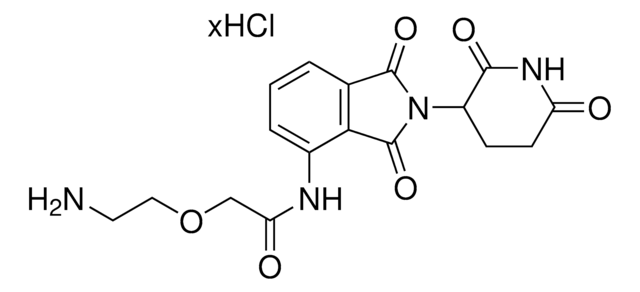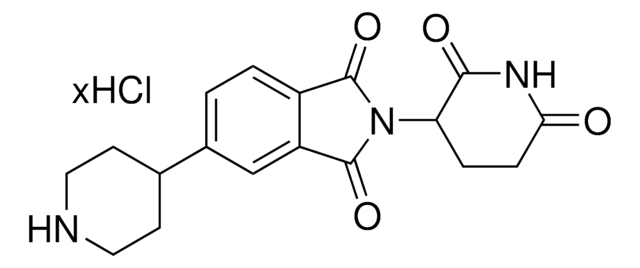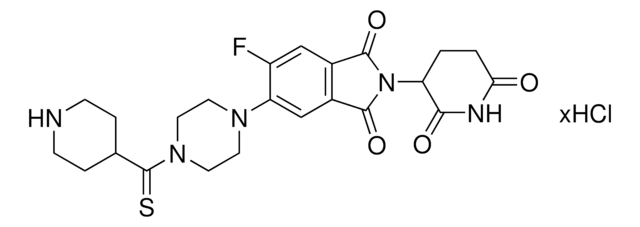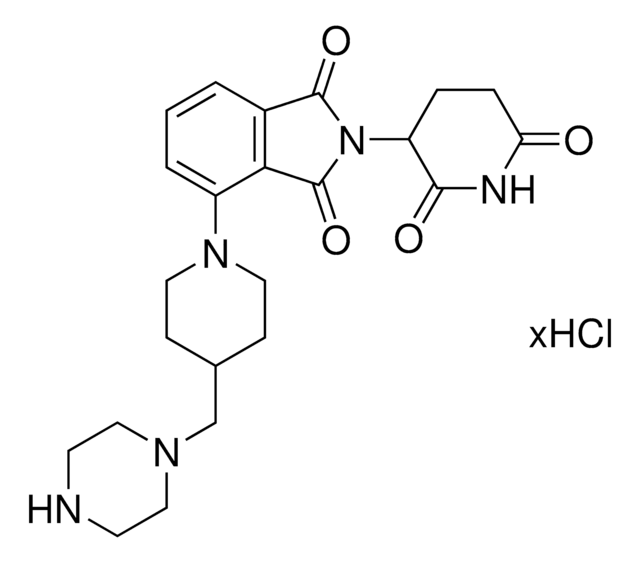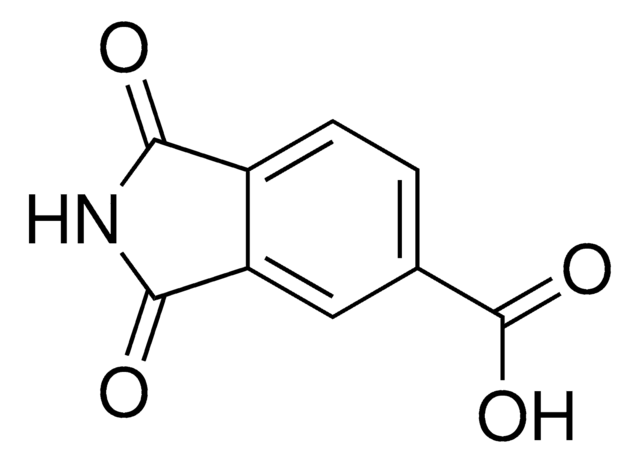Kluczowe dokumenty
929441
C5-Pomalidomide-piperazine hydrochloride
≥95%
Synonim(y):
Chlorowodorek 2-(2,6-dioksopiperydyn-3-ylo)-5-(piperazyn-1-ylo)izoindolino-1,3-dionu
About This Item
Polecane produkty
ligand
pomalidomide
Poziom jakości
Próba
≥95%
Formularz
powder
temp. przechowywania
2-8°C
ciąg SMILES
O=C1N(C2CCC(NC2=O)=O)C(C3=CC=C(N4CCNCC4)C=C31)=O
Klucz InChI
GFCKACFUYUKAPW-UHFFFAOYSA-N
Zastosowanie
Technology Spotlight: Degrader Building Blocks for Targeted Protein Degradation
Protein Degrader Building Block.
Inne uwagi
Informacje prawne
Hasło ostrzegawcze
Danger
Zwroty wskazujące rodzaj zagrożenia
Zwroty wskazujące środki ostrożności
Klasyfikacja zagrożeń
Repr. 1B
Kod klasy składowania
6.1C - Combustible acute toxic Cat.3 / toxic compounds or compounds which causing chronic effects
Klasa zagrożenia wodnego (WGK)
WGK 3
Temperatura zapłonu (°F)
Not applicable
Temperatura zapłonu (°C)
Not applicable
Wybierz jedną z najnowszych wersji:
Certyfikaty analizy (CoA)
It looks like we've run into a problem, but you can still download Certificates of Analysis from our Dokumenty section.
Proszę o kontakt, jeśli potrzebna jest pomoc Obsługa Klienta
Masz już ten produkt?
Dokumenty związane z niedawno zakupionymi produktami zostały zamieszczone w Bibliotece dokumentów.
Nasz zespół naukowców ma doświadczenie we wszystkich obszarach badań, w tym w naukach przyrodniczych, materiałoznawstwie, syntezie chemicznej, chromatografii, analityce i wielu innych dziedzinach.
Skontaktuj się z zespołem ds. pomocy technicznej

